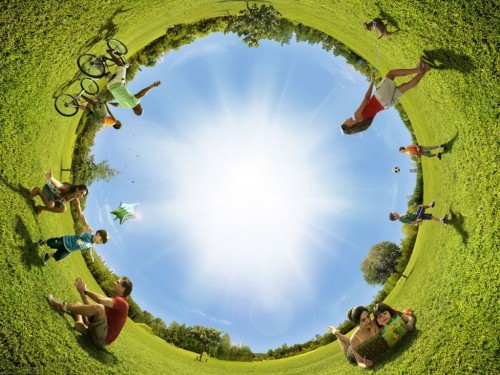
Well before the advent of modern technology, before agriculture, before we as humans knew where our next meal was coming from (certainly not from anywhere we couldn’t travel in a day…no jet-fresh sashimi), time was a simple concept. It was a concept that did not need to be tracked by wall clock, wristwatch, handheld device, or even sundial. In fact, back far enough, the concept of “time” didn’t even exist.
When life’s goals consisted primarily of survival and reproduction and all activities or breaks in activity (called “rest”) were centered on those two things alone, it wasn’t hard to “manage” time. In fact, while it was light enough to see, humans made sure they took care of their basic priorities first – eat (which incorporated physical work either hunting, or gathering…or running to avoid being eaten); teach the tribe how to eat and survive; and somewhere in the mix, on occasion, do the “work” necessary to reproduce. The same goals and efforts would be revisited the next day with variations according to season and location changes.
Life was simpler then…dangerous and risky, but simpler. Also, the economy of time was much nearer equilibrium, even slightly in favor of human wellness than we keep it today. There were sufficient dark hours to facilitate ample rest and repair and what needed to get done in the light did – it was a matter of life and death!
Fast-forward to modern culture (even the phrase “fast-forward” itself can create a stress response in many of us). Everything in today’s world is moving at break-neck speed and our days are overstuffed with a myriad of things clamoring for our focus, energy, and time. The very fact that we receive this information over excited electrons delivered via a global network of technology moving near the speed of light and making itself obsolete every eighteen months or less rather than on a handwritten document delivered personally attests to the overwhelming DEMAND placed on our time.
Compared to our ancestors’ lives it seems that each moment is immeasurably more valuable and, unfortunately, our lives are much more stressful as we strive to protect what moments are “ours” and precious. The number of hours in a day has neither increased nor decreased, yet modern society has made the phrase “time scarcity” relevant. Nearly a generation ago the overpopulating of modern society’s 24 hours was quite evident. Today, because of the speed of our technology and not surprisingly, increasing consumerism, the imbalance of demand on our time over its supply is exponentially greater.
In a 1993 article in the Journal of Park and Recreation Administration, the author discusses how even “Leisure service agencies must respond to people’s need to save time”. It is ironic that even organizations responsible for facilitating leisure and relaxation are required to consider at length how not to impose too much of a time “cost” to their patrons. The opening sections of the article provide observations on aspects of modern life that have contributed to this rather pronounced imbalance in the economy of time:
• The Roots of Time Scarcity
o The Segmentation of Work and Leisure
o Standard of Living
o Information Explosion
o The Quest for Efficiency
o A Stable Work Week
• Evidence for Time Scarcity
This “perception of time scarcity” discussed is exactly that – a perception brought on by our allowing an overwhelming number of forces to bear additional (often unreasonable) demand on our finite resource of time. Our choices in relation to how we apportion our time and manage our priorities play a large role in determining the levels of chronic, low-grade stress we bear in each minute of each day. We are masters of our own economy of time and accordingly, how stress will affect our physiology in the long-run.
Since we are all consumers rather than producers in this economy of time, it is our responsibility to regulate the amount of demand placed on what time we are given. Many of us need to learn the value of “No” and others of us need to simply take greater responsibility as stewards of a limited resource to make sure it’s allocated in the most healthful way possible, with little waste, keeping in mind that we are not the only consumers of the time that we have been given – family and community (the “tribe”) also rightfully place demands on our time.
Let’s take responsibility for our time “spending” and move this economy of time back toward equilibrium to minimize the stress it creates in our bodies. Despite what it may feel like now and then, we are in control of what we allow to consume our time – it all comes down to our decision. This is one deficit we as individuals absolutely have the power to reduce.











